Renato L. G. Cavalcante
Localization in Dynamic Indoor MIMO-OFDM Wireless Systems using Domain Adaptation
Aug 27, 2024Abstract:We propose a method for predicting the location of user equipment (UE) using wireless fingerprints in dynamic indoor non-line-of-sight (NLoS) environments. In particular, our method copes with the challenges posed by the drift, birth, and death of scattering clusters resulting from dynamic changes in the wireless environment. Prominent examples of such dynamic wireless environments include factory floors or offices, where the geometry of the environment undergoes changes over time. These changes affect the distribution of wireless fingerprints, demonstrating some similarity between the distributions before and after the change. Consequently, the performance of a location estimator initially designed for a specific environment may degrade significantly when applied after changes have occurred in that environment. To address this limitation, we propose a domain adaptation framework that utilizes neural networks to align the distributions of wireless fingerprints collected both before and after environmental changes. By aligning these distributions, we design an estimator capable of predicting UE locations from their wireless fingerprints in the new environment. Experiments validate the effectiveness of the proposed methods in localizing UEs in dynamic wireless environments.
Optimized Detection with Analog Beamforming for Monostatic Integrated Sensing and Communication
Apr 15, 2024Abstract:In this paper, we formalize an optimization framework for analog beamforming in the context of monostatic integrated sensing and communication (ISAC), where we also address the problem of self-interference in the analog domain. As a result, we derive semidefinite programs to approach detection-optimal transmit and receive beamformers, and we devise a superiorized iterative projection algorithm to approximate them. Our simulations show that this approach outperforms the detection performance of well-known design techniques for ISAC beamforming, while it achieves satisfactory self-interference suppression.
Towards Bridging the Gap between Near and Far-Field Characterizations of the Wireless Channel
Mar 10, 2024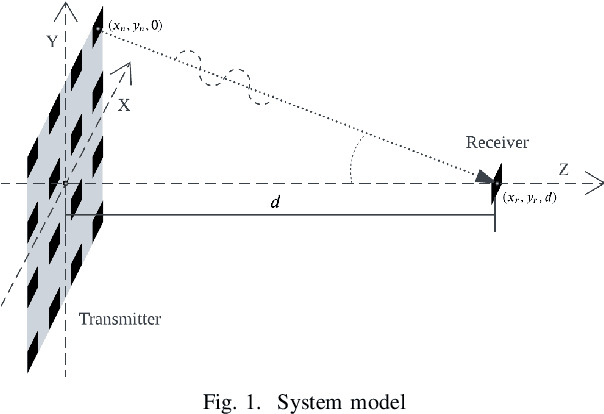

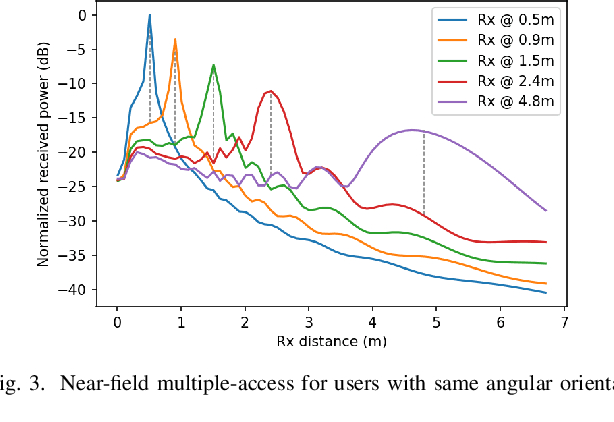
Abstract:The "near-field" propagation modeling of wireless channels is necessary to support sixth-generation (6G) technologies, such as intelligent reflecting surface (IRS), that are enabled by large aperture antennas and higher frequency carriers. As the conventional far-field model proves inadequate in this context, there is a pressing need to explore and bridge the gap between near and far-field propagation models. Although far-field models are simple and provide computationally efficient solutions for many practical applications, near-field models provide the most accurate representation of wireless channels. This paper builds upon the foundations of electromagnetic wave propagation theory to derive near and far-field models as approximations of the Green's function (Maxwell's equations). We characterize the near and far-field models both theoretically and with the help of simulations in a line-of-sight (LOS)-only scenario. In particular, for two key applications in multiantenna systems, namely, beamforming and multiple-access, we showcase the advantages of using the near-field model over the far-field, and present a novel scheduling scheme for multiple-access in the near-field regime. Our findings offer insights into the challenge of incorporating near-field models in practical wireless systems, fostering enhanced performance in future communication technologies.
Positive concave deep equilibrium models
Feb 06, 2024Abstract:Deep equilibrium (DEQ) models are widely recognized as a memory efficient alternative to standard neural networks, achieving state-of-the-art performance in language modeling and computer vision tasks. These models solve a fixed point equation instead of explicitly computing the output, which sets them apart from standard neural networks. However, existing DEQ models often lack formal guarantees of the existence and uniqueness of the fixed point, and the convergence of the numerical scheme used for computing the fixed point is not formally established. As a result, DEQ models are potentially unstable in practice. To address these drawbacks, we introduce a novel class of DEQ models called positive concave deep equilibrium (pcDEQ) models. Our approach, which is based on nonlinear Perron-Frobenius theory, enforces nonnegative weights and activation functions that are concave on the positive orthant. By imposing these constraints, we can easily ensure the existence and uniqueness of the fixed point without relying on additional complex assumptions commonly found in the DEQ literature, such as those based on monotone operator theory in convex analysis. Furthermore, the fixed point can be computed with the standard fixed point algorithm, and we provide theoretical guarantees of geometric convergence, which, in particular, simplifies the training process. Experiments demonstrate the competitiveness of our pcDEQ models against other implicit models.
Fixed-point methods for long-term power control and beamforming design in large-scale MIMO
Dec 07, 2023Abstract:This study presents novel applications of fixed-point methods to solve previously open joint power control and beamforming design problems in modern large-scale MIMO systems, e.g., based on the cell-free massive MIMO and XL-MIMO concepts. In particular, motivated by the need for scalable system architectures, we revisit the classical sum power minimization and max-min fair design criteria by considering long-term power control and beamforming design based on channel statistics and possibly limited channel state information (CSI) sharing across distributed processing units. This approach is believed to mitigate the severe scalability issues of competing short-term optimal algorithms in the literature, which must be executed for every channel realization by a central controller endowed with global CSI, hence imposing very demanding requirements in terms of computation and interconnection capabilities. The obtained optimal algorithms are then illustrated and compared against existing short-term and long-term approaches via numerical simulations in a cell-free massive MIMO setup.
UL-DL duality for cell-free massive MIMO with per-AP power and information constraints
Jan 16, 2023Abstract:We derive a novel uplink-downlink duality principle for optimal joint precoding design under per-transmitter power and information constraints in fading channels. The main application is to cell-free networks, where each access point (AP) must typically satisfy an individual power constraint and form its transmit signal on the basis of possibly partial sharing of data bearing signals and channel state information. Our duality principle applies to ergodic achievable rates given by the popular hardening bound, and it can be interpreted as a nontrivial generalization of a previous result by Yu and Lan for deterministic channels. This generalization allows us to cover more involved information constraints, and to show that optimal joint precoders can be obtained using a variation of the recently developed team minimum mean-square error method. As particular examples, we solve the problems of optimal centralized and local precoding design in user-centric cell-free massive MIMO networks subject to per-AP power constraints.
Inverse Solvability and Security with Applications to Federated Learning
Nov 28, 2022Abstract:We introduce the concepts of inverse solvability and security for a generic linear forward model and demonstrate how they can be applied to models used in federated learning. We provide examples of such models which differ in the resulting inverse solvability and security as defined in this paper. We also show how the large number of users participating in a given iteration of federated learning can be leveraged to increase both solvability and security. Finally, we discuss possible extensions of the presented concepts including the nonlinear case.
Closed-form max-min power control for some cellular and cell-free massive MIMO networks
May 03, 2022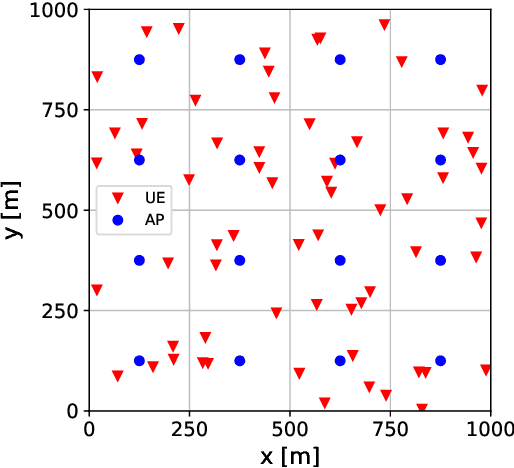
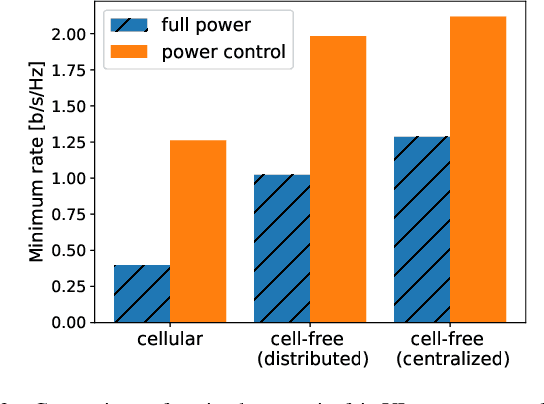

Abstract:Many common instances of power control problems for cellular and cell-free massive MIMO networks can be interpreted as max-min utility optimization problems involving affine interference mappings and polyhedral constraints. We show that these problems admit a closed-form solution which depends on the spectral radius of known matrices. In contrast, previous solutions in the literature have been indirectly obtained using iterative algorithms based on the bisection method, or on fixed-point iterations. Furthermore, we also show an asymptotically tight bound for the optimal utility, which in turn provides a simple rule of thumb for evaluating whether the network is operating in the noise or interference limited regime. We finally illustrate our results by focusing on classical max-min fair power control for cell-free massive MIMO networks.
Superiorized Adaptive Projected Subgradient Method with Application to MIMO Detection
Mar 09, 2022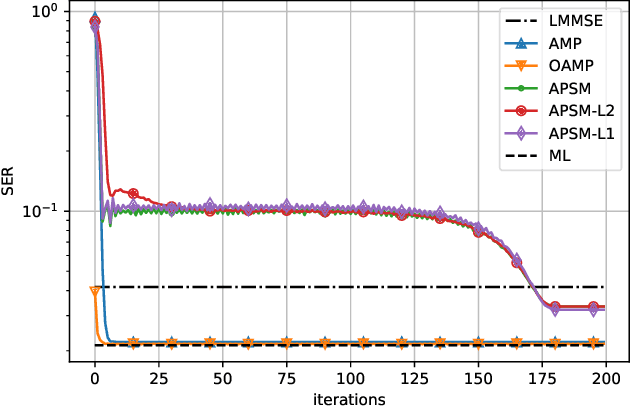
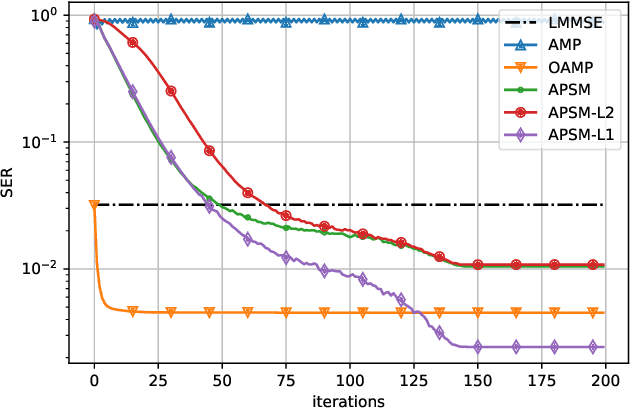
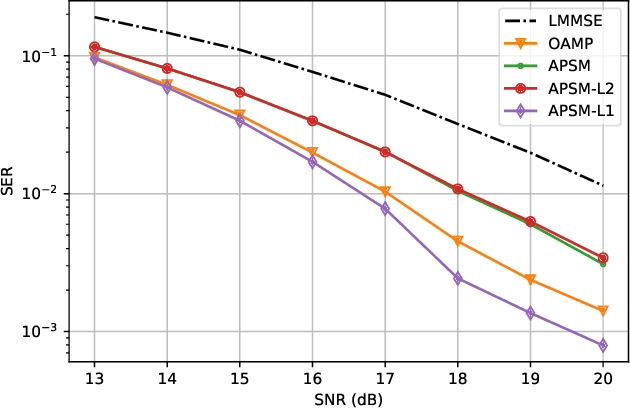
Abstract:In this paper, we show that the adaptive projected subgradient method (APSM) is bounded perturbation resilient. To illustrate a potential application of this result, we propose a set-theoretic framework for MIMO detection, and we devise algorithms based on a superiorized APSM. Various low-complexity MIMO detection algorithms achieve excellent performance on i.i.d. Gaussian channels, but they typically incur high performance loss if realistic channel models are considered. Compared to existing low-complexity iterative detectors such as approximate message passing (AMP), the proposed algorithms can achieve considerably lower symbol error ratios over correlated channels. At the same time, the proposed methods do not require matrix inverses, and their complexity is similar to AMP.
Real-Time GPU-Accelerated Machine Learning Based Multiuser Detection for 5G and Beyond
Jan 14, 2022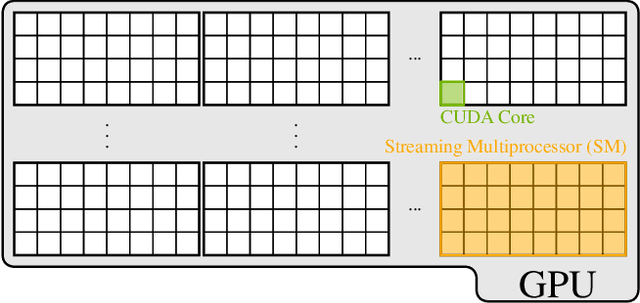
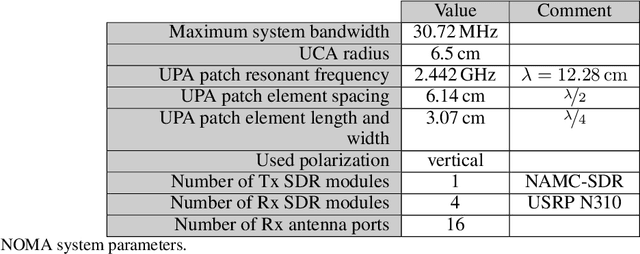
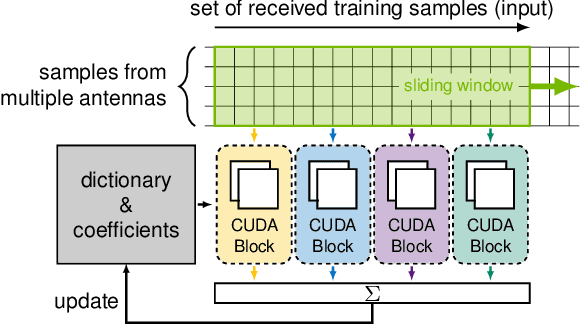
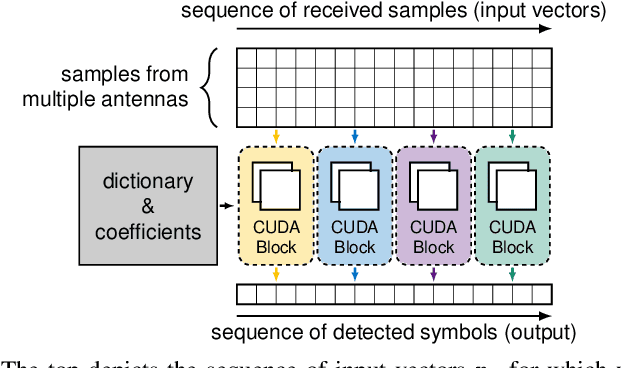
Abstract:Adaptive partial linear beamforming meets the need of 5G and future 6G applications for high flexibility and adaptability. Choosing an appropriate tradeoff between conflicting goals opens the recently proposed multiuser (MU) detection method. Due to their high spatial resolution, nonlinear beamforming filters can significantly outperform linear approaches in stationary scenarios with massive connectivity. However, a dramatic decrease in performance can be expected in high mobility scenarios because they are very susceptible to changes in the wireless channel. The robustness of linear filters is required, considering these changes. One way to respond appropriately is to use online machine learning algorithms. The theory of algorithms based on the adaptive projected subgradient method (APSM) is rich, and they promise accurate tracking capabilities in dynamic wireless environments. However, one of the main challenges comes from the real-time implementation of these algorithms, which involve projections on time-varying closed convex sets. While the projection operations are relatively simple, their vast number poses a challenge in ultralow latency (ULL) applications where latency constraints must be satisfied in every radio frame. Taking non-orthogonal multiple access (NOMA) systems as an example, this paper explores the acceleration of APSM-based algorithms through massive parallelization. The result is a GPU-accelerated real-time implementation of an orthogonal frequency-division multiplexing (OFDM)-based transceiver that enables detection latency of less than one millisecond and therefore complies with the requirements of 5G and beyond. To meet the stringent physical layer latency requirements, careful co-design of hardware and software is essential, especially in virtualized wireless systems with hardware accelerators.
 Add to Chrome
Add to Chrome Add to Firefox
Add to Firefox Add to Edge
Add to Edge